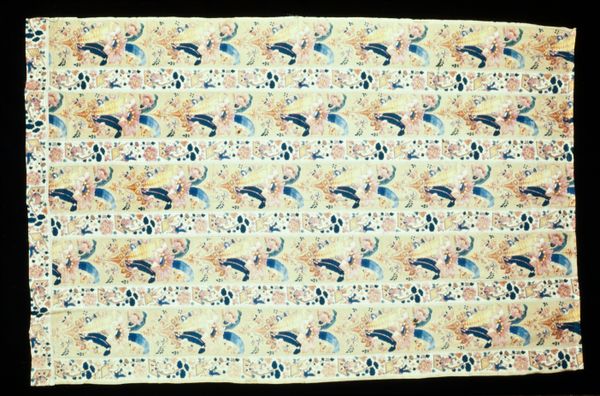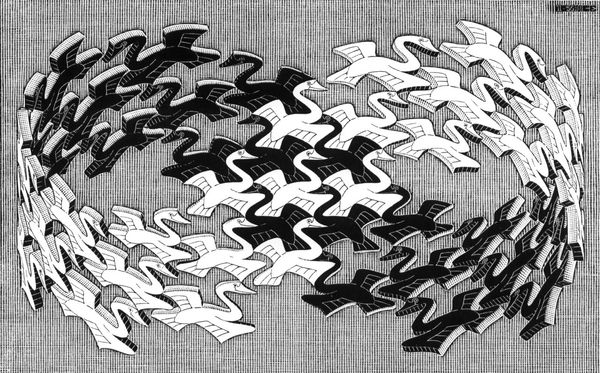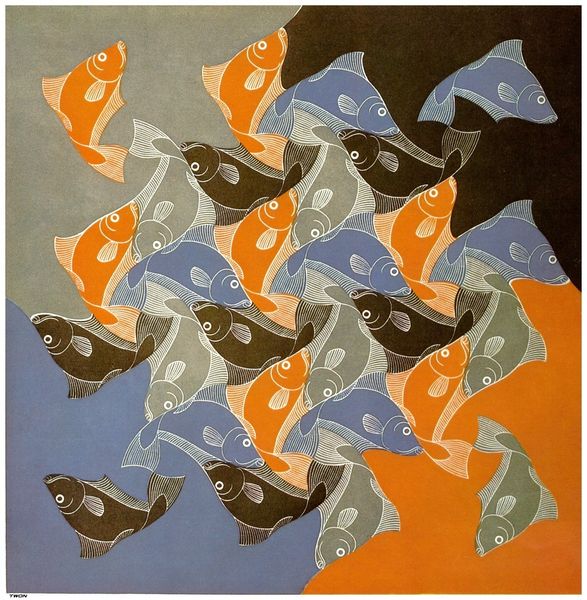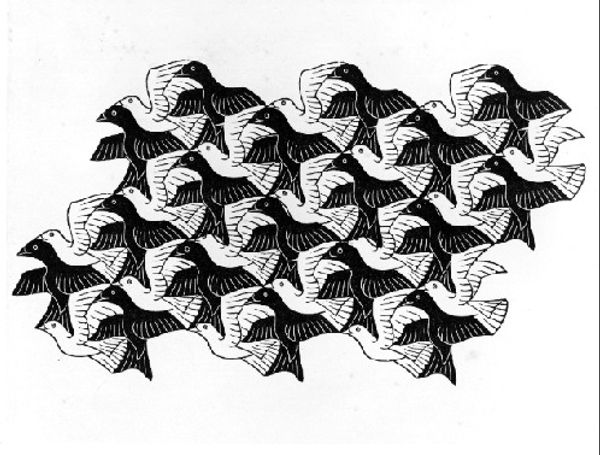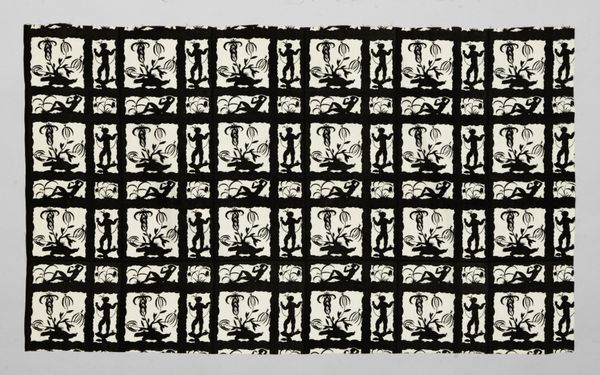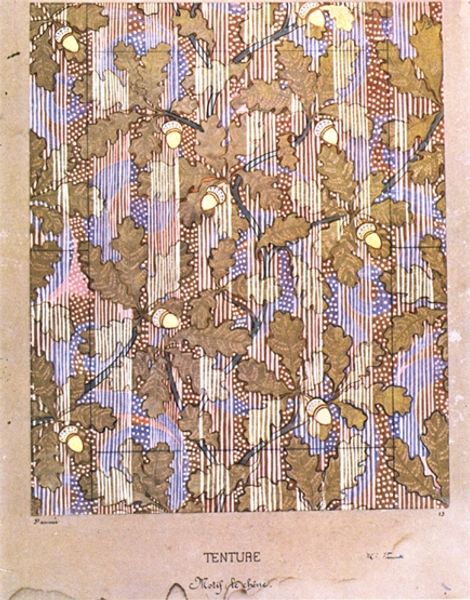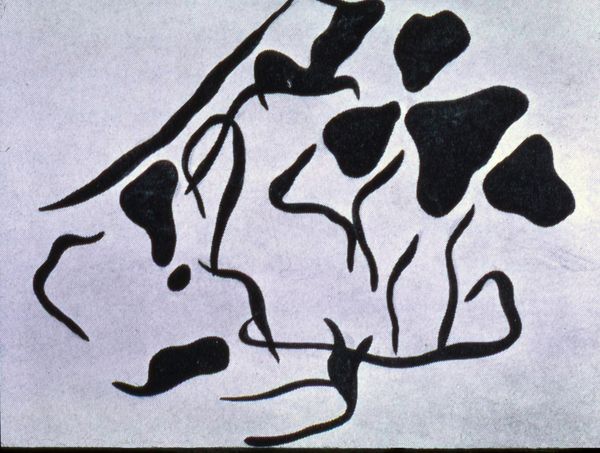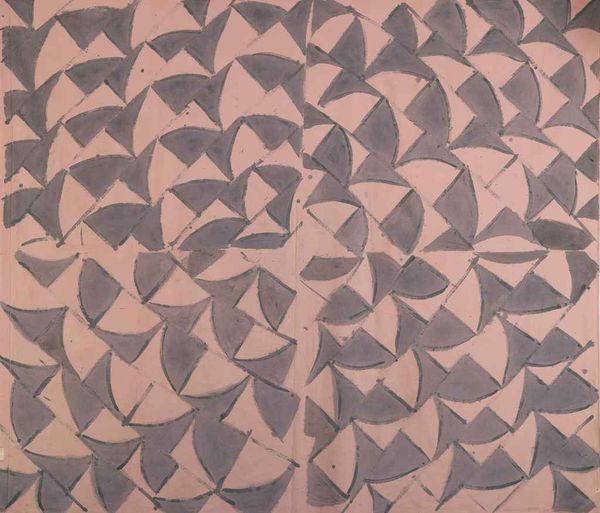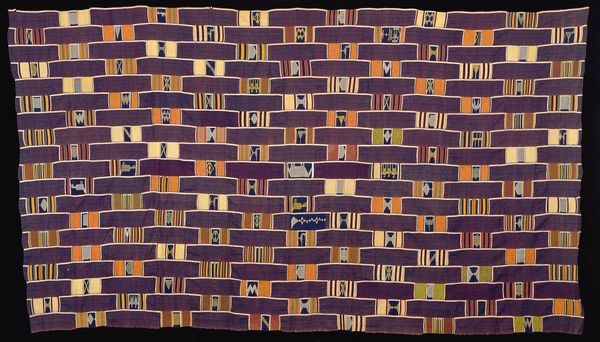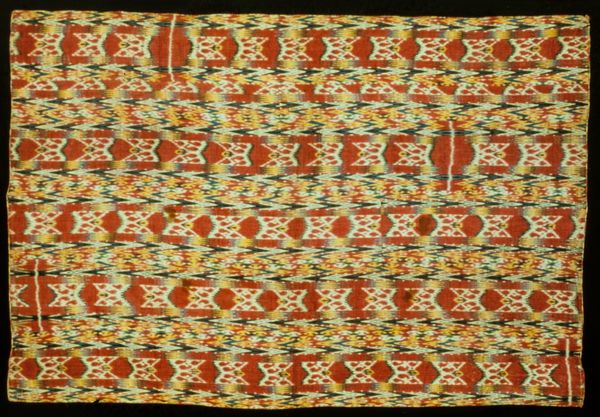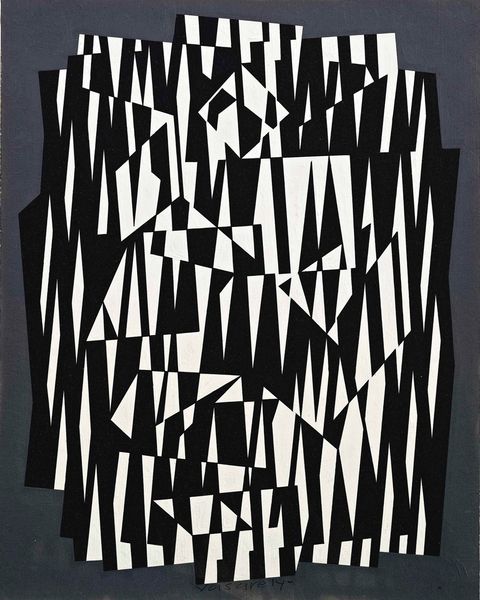
Copyright: M.C. Escher,Fair Use
Curator: I’m drawn to the rigid geometry yielding to organic shapes in Escher’s “Metamorphosis II excerpt 5,” created in 1939. The medium itself, a print, suggests a dedication to accessibility, to a wider distribution of his ideas. Editor: Visually arresting, isn't it? The repeating birds morphing into cubic forms create a dynamic sense of organized chaos. One almost feels suspended between the natural world and a man-made cityscape, reflecting, perhaps, anxieties about industrialization and encroaching modernity. Curator: Exactly, and if we look closely at the process, it is evident that such complex transformations could not happen overnight. The initial block printing method lays the basis for meticulous shifts in perspective and tessellation, a signature characteristic that reflects Escher’s formal training and skill. Editor: Certainly, the artist’s skill is evident but let's also consider the context of 1939. As the world braced for war, works such as this may mirror our struggle to reconcile individual freedom, here embodied by the birds, with the structures that both define and constrain us, represented by the city blocks. Are we doomed to become regimented? Curator: Or can we see in this visual metaphor a certain hope that structures are never static, never fully confining? The eye follows the repeating forms, a dance between nature and culture revealing, precisely, that no element ever remains static. The printing would likely involve an intricate design process; carving, inking, pressing. Every stage offers opportunity. Editor: And for viewers, the interplay evokes pressing questions. Escher, through an image that shifts before our very eyes, encourages the unpacking of systems that frame existence—to recognize constraints imposed by everything from architectural spaces to national borders, all the things designed to limit our access. Curator: A limitation this artwork seems to elude. Here is an exemplar of the labor intensive process behind an enduring artistic style and its capacity to explore freedom versus containment. Editor: The geometric shift here reflects not just formal experimentations, but also speaks to broader historical shifts and how individuals relate to shifting sociopolitical conditions and limitations.
Comments
No comments
Be the first to comment and join the conversation on the ultimate creative platform.
